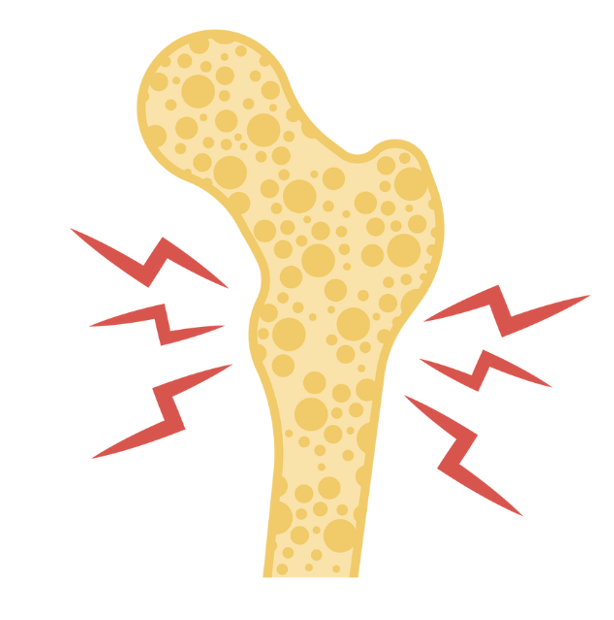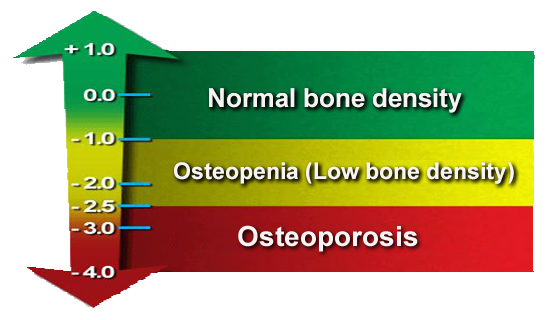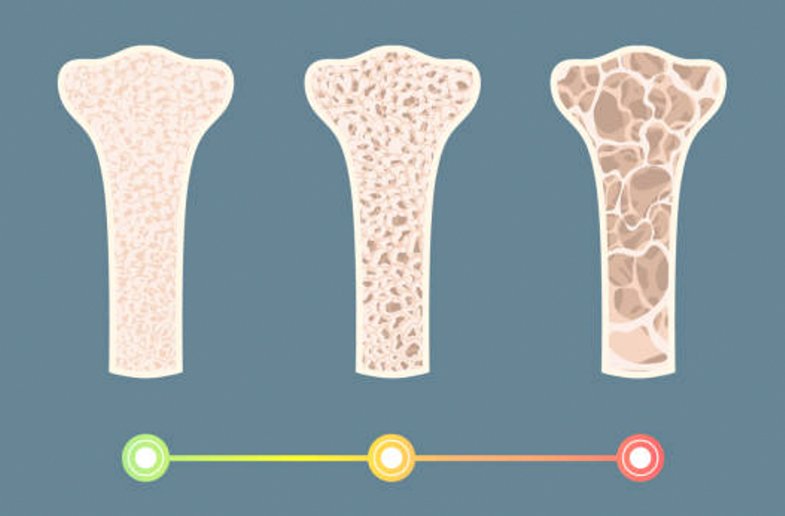However, the success of an implant strongly depends on bone density — the amount and quality of bone available in the jaw. Sufficient bone is needed to hold the implant securely and ensure long-term stability. When bone density is low, the implant may not integrate properly, leading to loosening or even failure.
Bone loss in the jaw can occur for many reasons: missing teeth left untreated for years, gum disease, trauma, or simply the natural aging process. Over time, the jawbone begins to shrink and weaken, reducing its ability to support implants.
The good news is that modern dentistry offers several advanced techniques to help patients with low bone density successfully receive dental implants. Understanding how bone quality affects implant placement is the first step toward finding the best treatment plan for your individual needs
Why Low Bone Density Can Complicate Dental Implants
While dental implants are highly successful for most patients, low bone density in the jaw can create significant challenges. The jawbone serves as the anchor for the implant, and without sufficient strength or volume, the implant may not properly fuse with the bone, risking instability or failure.
Patients with low bone density often experience complications such as implant loosening, prolonged healing times, or even rejection of the implant. Common causes of reduced bone density include long-term tooth loss, periodontal disease, trauma, or age-related bone resorption. In addition, systemic conditions like osteoporosis or certain medications can further weaken bone quality, making implant placement more complex.
Traditional dental implants require a minimum amount of bone for successful integration. When this requirement isn’t met, standard implant procedures may not be viable, and alternative approaches are needed. Addressing low bone density early is crucial because untreated bone loss can limit future treatment options, making restoration more difficult.
Fortunately, advancements in modern dentistry now provide several specialized techniques to overcome these challenges. Methods such as bone grafting, short implants, and mini implants allow patients with weak or thin jawbones to receive dental implants safely and effectively, restoring both function and confidence in their smile.
Bone Grafting: Rebuilding the Foundation for Strong Dental Implants

For patients with low bone density, bone grafting is one of the most effective ways to prepare the jaw for dental implants. This procedure involves adding bone material to the jaw to increase both height and width, creating a strong foundation for implant placement. Grafting can be done using the patient’s own bone, donor bone, or synthetic materials, depending on the specific needs of the case.
The process usually begins with a detailed evaluation, including X-rays or 3D scans, to assess bone quality and determine the exact amount of grafting needed. During the procedure, the graft material is carefully placed and secured, allowing the body to gradually integrate it into the existing bone. This integration provides sufficient stability for implants to fuse successfully during the healing period.
Bone grafting not only improves the chances of successful implant placement but also helps restore facial structure and prevent the sunken appearance that can result from bone loss. While the procedure requires additional time for healing — often several months — the long-term benefits make it a worthwhile investment for patients seeking durable, natural-looking dental implants.
Modern dental clinics, like AdmiredClinic in Clacton, offer advanced bone grafting techniques with minimal discomfort and faster recovery times. With proper care and follow-up, patients can regain enough bone support to confidently proceed with implant treatment, even in cases of significant jawbone loss.
Short Dental Implants: A Modern Solution for Weak Jawbones
For patients with low bone density, short dental implants have emerged as an effective alternative to traditional implants. These implants are smaller in length but still provide sufficient stability to support crowns, bridges, or dentures. Because they require less bone for placement, short implants can often eliminate the need for extensive bone grafting procedures.
Short dental implants are particularly beneficial for patients who have experienced significant jawbone loss or want to avoid long recovery times associated with grafting. Despite their reduced size, advancements in implant design and surface technology allow them to integrate securely with the existing bone, ensuring long-term durability and function.
One key advantage of short implants is that they reduce surgical complexity while still achieving high success rates. Patients can often receive their implants faster, with fewer invasive procedures, which minimizes discomfort and accelerates recovery. Additionally, short implants are ideal for posterior regions of the mouth where bone height is often limited.
By choosing short dental implants, patients with weak jawbones can enjoy the benefits of a stable, natural-looking smile without the prolonged treatment timeline that traditional grafting might require. Experienced clinics, such as AdmiredClinic in Clacton, specialize in evaluating candidates and customizing implant solutions to meet individual bone conditions and aesthetic goals.
Mini Dental Implants: When Traditional Implants Aren’t an Option
In some cases, patients with severely reduced jawbone may not be suitable candidates for traditional or even short dental implants. This is where mini dental implants come into play. These smaller-diameter implants are less invasive and can be placed in areas with very limited bone, offering a practical solution for securing dentures or single crowns.
Mini implants are typically easier and quicker to place than conventional implants, often requiring only local anesthesia and minimal recovery time. Despite their size, they provide adequate support for functional dental restorations, making them a valuable option for patients who want to avoid bone grafting or extensive surgery.
One of the main advantages of mini implants is their versatility. They can be used to stabilize lower dentures, provide temporary solutions during healing, or even serve as long-term replacements in select cases. Additionally, their smaller size reduces surgical trauma and lowers the risk of complications in patients with compromised bone.
Clinics like AdmiredClinic in Clacton carefully evaluate each patient to determine if mini implants are suitable, taking into account bone density, oral health, and aesthetic goals. With proper planning and maintenance, mini dental implants can restore confidence, improve chewing function, and provide a natural-looking smile — even in challenging cases of bone loss.
Choosing the Right Treatment Plan at AdmiredClinic in Clacton
Selecting the right dental implant solution is essential for patients with low bone density. Every individual’s jawbone condition, oral health, and aesthetic goals are unique, and a personalized treatment plan ensures the best possible outcome. Advanced techniques, including bone grafting, short implants, and mini implants, allow dentists to tailor solutions that meet each patient’s specific needs while minimizing risks.
At AdmiredClinic in Clacton, experienced dental professionals carefully evaluate every case, recommend the most suitable implant type, and guide patients through every step of the procedure. With their expertise, patients can achieve a stable, natural-looking smile even in challenging situations where bone density is limited.
If you are considering dental implants and want a reliable, high-quality treatment, the team at AdmiredClinic in Clacton can help you restore your smile safely and effectively.
Dental implants have become the gold standard for replacing missing teeth, offering patients a natural look, stable function, and long-term comfort. However, one of the most common challenges patients face before getting implants is having insufficient bone density in the jaw. Bone loss can occur due to gum disease, tooth loss over time, or natural aging — all of which can make traditional implant placement more complicated.
Thankfully, advancements in modern dentistry now allow even patients with weak or thin jawbones to enjoy the benefits of dental implants. Through innovative techniques such as bone grafting, short implants, and mini implants, dental specialists can restore stability and confidence in your smile without invasive or high-risk procedures.
This article explores how dental implants can still be a viable option for patients with low bone density. We’ll discuss why bone strength matters, the latest treatment techniques, and how clinics like AdmiredClinic in Clacton help patients achieve long-lasting results — even when bone volume is limited.
Understanding Dental Implants and Bone Density
Dental implants are small titanium posts that act as artificial tooth roots, providing a stable foundation for replacement teeth. Unlike dentures, which rest on the gums, implants are surgically placed into the jawbone and naturally fuse with the bone over time — a process called osseointegration. This connection allows dental implants to look, feel, and function just like real teeth.

However, the success of an implant strongly depends on bone density — the amount and quality of bone available in the jaw. Sufficient bone is needed to hold the implant securely and ensure long-term stability. When bone density is low, the implant may not integrate properly, leading to loosening or even failure.
Bone loss in the jaw can occur for many reasons: missing teeth left untreated for years, gum disease, trauma, or simply the natural aging process. Over time, the jawbone begins to shrink and weaken, reducing its ability to support implants.
The good news is that modern dentistry offers several advanced techniques to help patients with low bone density successfully receive dental implants. Understanding how bone quality affects implant placement is the first step toward finding the best treatment plan for your individual needs
Why Low Bone Density Can Complicate Dental Implants
While dental implants are highly successful for most patients, low bone density in the jaw can create significant challenges. The jawbone serves as the anchor for the implant, and without sufficient strength or volume, the implant may not properly fuse with the bone, risking instability or failure.
Patients with low bone density often experience complications such as implant loosening, prolonged healing times, or even rejection of the implant. Common causes of reduced bone density include long-term tooth loss, periodontal disease, trauma, or age-related bone resorption. In addition, systemic conditions like osteoporosis or certain medications can further weaken bone quality, making implant placement more complex.
Traditional dental implants require a minimum amount of bone for successful integration. When this requirement isn’t met, standard implant procedures may not be viable, and alternative approaches are needed. Addressing low bone density early is crucial because untreated bone loss can limit future treatment options, making restoration more difficult.
Fortunately, advancements in modern dentistry now provide several specialized techniques to overcome these challenges. Methods such as bone grafting, short implants, and mini implants allow patients with weak or thin jawbones to receive dental implants safely and effectively, restoring both function and confidence in their smile.
Bone Grafting: Rebuilding the Foundation for Strong Dental Implants

For patients with low bone density, bone grafting is one of the most effective ways to prepare the jaw for dental implants. This procedure involves adding bone material to the jaw to increase both height and width, creating a strong foundation for implant placement. Grafting can be done using the patient’s own bone, donor bone, or synthetic materials, depending on the specific needs of the case.
The process usually begins with a detailed evaluation, including X-rays or 3D scans, to assess bone quality and determine the exact amount of grafting needed. During the procedure, the graft material is carefully placed and secured, allowing the body to gradually integrate it into the existing bone. This integration provides sufficient stability for implants to fuse successfully during the healing period.
Bone grafting not only improves the chances of successful implant placement but also helps restore facial structure and prevent the sunken appearance that can result from bone loss. While the procedure requires additional time for healing — often several months — the long-term benefits make it a worthwhile investment for patients seeking durable, natural-looking dental implants.
Modern dental clinics, like AdmiredClinic in Clacton, offer advanced bone grafting techniques with minimal discomfort and faster recovery times. With proper care and follow-up, patients can regain enough bone support to confidently proceed with implant treatment, even in cases of significant jawbone loss.
Short Dental Implants: A Modern Solution for Weak Jawbones
For patients with low bone density, short dental implants have emerged as an effective alternative to traditional implants. These implants are smaller in length but still provide sufficient stability to support crowns, bridges, or dentures. Because they require less bone for placement, short implants can often eliminate the need for extensive bone grafting procedures.
Short dental implants are particularly beneficial for patients who have experienced significant jawbone loss or want to avoid long recovery times associated with grafting. Despite their reduced size, advancements in implant design and surface technology allow them to integrate securely with the existing bone, ensuring long-term durability and function.
One key advantage of short implants is that they reduce surgical complexity while still achieving high success rates. Patients can often receive their implants faster, with fewer invasive procedures, which minimizes discomfort and accelerates recovery. Additionally, short implants are ideal for posterior regions of the mouth where bone height is often limited.
By choosing short dental implants, patients with weak jawbones can enjoy the benefits of a stable, natural-looking smile without the prolonged treatment timeline that traditional grafting might require. Experienced clinics, such as AdmiredClinic in Clacton, specialize in evaluating candidates and customizing implant solutions to meet individual bone conditions and aesthetic goals.
Mini Dental Implants: When Traditional Implants Aren’t an Option
In some cases, patients with severely reduced jawbone may not be suitable candidates for traditional or even short dental implants. This is where mini dental implants come into play. These smaller-diameter implants are less invasive and can be placed in areas with very limited bone, offering a practical solution for securing dentures or single crowns.
Mini implants are typically easier and quicker to place than conventional implants, often requiring only local anesthesia and minimal recovery time. Despite their size, they provide adequate support for functional dental restorations, making them a valuable option for patients who want to avoid bone grafting or extensive surgery.
One of the main advantages of mini implants is their versatility. They can be used to stabilize lower dentures, provide temporary solutions during healing, or even serve as long-term replacements in select cases. Additionally, their smaller size reduces surgical trauma and lowers the risk of complications in patients with compromised bone.
Clinics like AdmiredClinic in Clacton carefully evaluate each patient to determine if mini implants are suitable, taking into account bone density, oral health, and aesthetic goals. With proper planning and maintenance, mini dental implants can restore confidence, improve chewing function, and provide a natural-looking smile — even in challenging cases of bone loss.
Choosing the Right Treatment Plan at AdmiredClinic in Clacton
Selecting the right dental implant solution is essential for patients with low bone density. Every individual’s jawbone condition, oral health, and aesthetic goals are unique, and a personalized treatment plan ensures the best possible outcome. Advanced techniques, including bone grafting, short implants, and mini implants, allow dentists to tailor solutions that meet each patient’s specific needs while minimizing risks.
At AdmiredClinic in Clacton, experienced dental professionals carefully evaluate every case, recommend the most suitable implant type, and guide patients through every step of the procedure. With their expertise, patients can achieve a stable, natural-looking smile even in challenging situations where bone density is limited.
If you are considering dental implants and want a reliable, high-quality treatment, the team at AdmiredClinic in Clacton can help you restore your smile safely and effectively.


